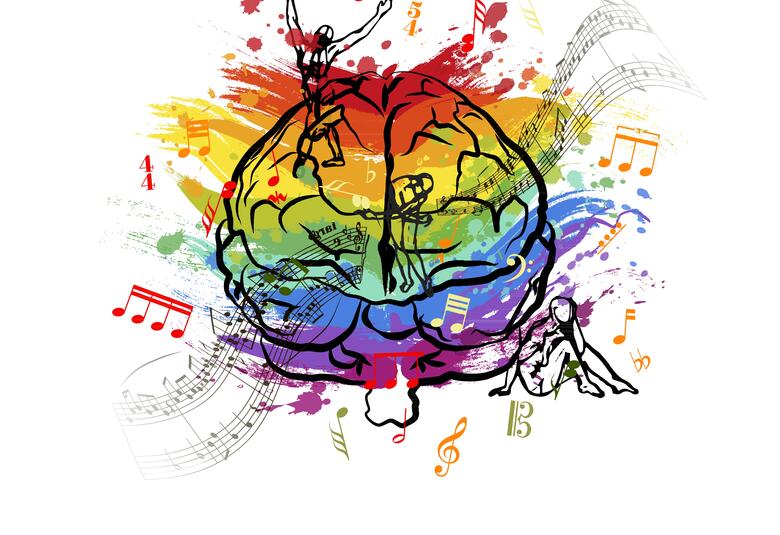A round-up from refugee mental health to cognitive training and the effects of a light-box on libido.
With the psychiatry congress season about to kick-off with the EPA in Florence, and the first major neurology meetings not far behind, now seems a good time to look back over the past year: has there been “progress in mind”?
Caring for the mental health of migrants and refugees is psychiatry’s greatest challenge so far this century. That was the message of the keynote address at last year’s Madrid meeting of the EPA. In Germany alone, the number of new people needing care is the equivalent of a large city. And in fact – given a history of trauma and greater susceptibility to fragile mental health – needs are likely to be far greater than those of an average city.
The problem is not solely one of ensuring adequate resources: we will require reinforcement of intercultural skills as well.
Given the large number of young people among today’s refugees, and their adverse early-life experiences, a study of the long-term mental health of children brought to the UK from Romanian orphanages is highly relevant.1 Despite adoption in the 1990s by supportive families, many such children continue to experience complex mental health problems in adulthood. Institutional neglect lasting more than six months predicted poor outcome.
Despite support, many people with early trauma experience mental health problems as adults
Such findings highlight questions of resilience versus susceptibility, the long-term effects on the brain of early life experience, and the need for early intervention.
Assertive intervention early in psychosis
A different setting for early intervention – first episode psychosis, FEP – continued to be the focus of much research effort, and enthusiasm for its implementation. Assertive early intervention in Denmark provides an example of what can be achieved.
Building on the positive OPUS trial, services have been rolled out over the whole country, with experts and regional health authorities agreeing on a treatment package for people with psychosis. The commitment to evaluate all patients within one month is regarded as a huge step forward.
There has also been interest in maintaining the physical health of those with serious mental health problems; and data from a controlled intervention study in Sydney, Australia, are encouraging. Typically, an FEP patient gains around 12 kg over the first two years’ treatment with antipsychotics. This paves the way to metabolic disturbance and cardiovascular morbidity and mortality.
However, that such weight gain is not inevitable has been shown by the Keeping the Body in Mind programme of intensive intervention to encourage exercise and healthy eating.
The intervention group put on a mean of 1.8 kg over the initial twelve weeks of study while patients who had standard care at another centre gained 7.8 kg. Differences were maintained at two years.
Rewiring the “connectome”
The American Psychiatric Association meeting in Atlanta heard promising new evidence suggesting that targeted cognitive training in people with FEP can take advantage of neuroplasticity to help rewire the brain.
Intensive training in speech and facial recognition results in normalization of brain function and long-term symptom reduction, according to the results of a controlled trial from the University of California, San Francisco.
Intensive training in speech and facial recognition results in normalization of brain function and long-term symptom reduction
People with FEP were randomized to targeted cognitive training or an equivalent amount of time playing computer games that were not specifically designed to encourage brain plasticity. Those randomized to cognitive training scored higher than controls on global cognition, speed of processing, verbal and visual learning and memory, and problem solving. Importantly, they also had a stable reduction in PANSS scores.
Insights into depression
Around 50% of depressed patients recommended drug therapy discontinue before a clinician would think that appropriate, and many patients stop within three months. Adverse events, one of which is again weight gain, are in large part responsible.
In a University of Münster Study presented at last September’s ECNP in Vienna, clinical factors associated with weight gain were a low to normal baseline BMI, severity of depression, presence of psychotic symptoms, and use of medication known to be associated with increase in weight. That last factor, at least, is avoidable.
The possible role of inflammation in depression continues to attract attention and was discussed at the same ECNP symposium. Taken together, a good body of data suggests a connection between the immune system and the brain that may well result in relevant effects on neurogenesis and synaptic plasticity.
There is post-mortem evidence of activated microglial cells – which release pro-inflammatory mediators -- in the brains of patients with depression; and data from in vivo PET studies using radiolabelled tracer for translocator protein (expressed by microglia) links the extent of their activation to greater severity of depression.
High IL-6 levels in children increase risk of depression by the age of 18 years. Ketamine-induced antidepressant effects are associated with reduction in IL-6 and TNF-alpha; and anti-TNF antibodies may be effective in patients with MDD and high baseline levels of C-reactive protein.
Where now in neurology?
In two major unmet needs – for a more effective treatment of Parkinson’s Disease, and for any really effective treatment for Alzheimer’s Disease – there is sadly little progress to report. The year saw major AD drug trials fail the phase III hurdle. Does the explanation lie in the wrong target, or the wrong animal models, or the wrong drug, or the wrong timing? Or were we always being overoptimistic?
If it takes three drugs with different mechanisms of action to manage hypertension, and three highly potent antiretrovirals to suppress HIV – which presents a relatively simple target -- and three drugs to effectively control type II diabetes, was it ever likely that a single agent would have much impact on the complex long-term processes underlying neurodegenerative diseases?
If it takes three antiretrovirals to suppress HIV, is it likely that one drug will prevent neurodegneration?
On a more positive note, there are still more than fifty trials underway of agents that might prevent or treat AD.2 Even though there is evidence of amyloid deposition many years before mild cognitive impairment, and even though the transition from mild impairment to dementia is far from certain, there is hope that biomarkers predictive of subsequent AD development will eventually justify trials of early intervention with neuroprotective agents. And we can also find hope in the growing body of epidemiological evidence from cohort studies that the age-adjusted incidence of dementia is falling even as the absolute number of affected people continues to increase.
And on the lighter side...
Last year’s ECNP saw a number of presentations which attracted wide media interest. One was a study from Siena, Italy, showing that bright light increased testosterone levels and led to greater sexual satisfaction in men with low libido. The trial, based on evidence of seasonal variation in sexual interest, found that regular early-morning use of a light box had positive effects.
And a pilot study from Rotterdam, also discussed at the ECNP, suggests that being told an image is a work of art rather than real-life produces a different EEG response. The amplitude of the Late Positive Potential was much greater when participants were told that a picture was real than when they were told it was art. This finding can be interpreted as supporting the philosopher Immanuel Kant in his belief that we distance ourselves emotionally from an artwork in order to properly appreciate it. Works of art were also rated as being more likable than were real pictures.
Our correspondent’s highlights from the symposium are meant as a fair representation of the scientific content presented. The views and opinions expressed on this page do not necessarily reflect those of Lundbeck.




